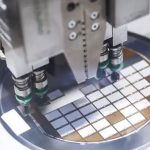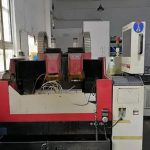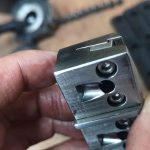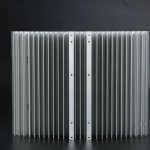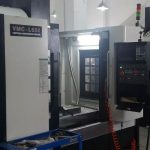Precision machining refers to a machining technology with a machining accuracy of 1~01μm and a surface roughness of Ra01~001μm. However, this precision limit will continue to change with the progress of processing technology. Today, Alloy Wiki analyzes what precision machining is, and precision machining may be the general machining of tomorrow.
The problems to be solved by Alloy Wiki precision machining are machining accuracy, including form and position tolerance, dimensional accuracy and surface condition; and machining efficiency. Some machining can achieve better machining accuracy, but it is difficult to achieve high machining efficiency. Precision machining includes processing technologies such as micro-machining, ultra-fine processing, and finishing. Alloy Wiki’s traditional precision machining methods include belt grinding, precision cutting, honing, precision grinding and polishing.
- (1) Abrasive belt grinding uses a blended cloth with abrasives to process workpieces. It belongs to the category of coated abrasives. It has the characteristics of high productivity, good surface quality, and wide range of use.
- (2) Precision cutting, also known as diamond tool cutting (SPDT), Alloy Wiki parts processing manufacturers use high-precision machine tools and single crystal diamond tools for cutting, mainly used for the precision of soft metals such as copper and aluminum that are not suitable for grinding. Processing, such as computer drums, magnetic disks, and metal mirrors for high-power lasers, has a precision of 1 to 2 levels higher than that of general cutting.
- (3) Honing, a honing head composed of oilstone sand strips reciprocates along the surface of the workpiece under a certain pressure. The surface roughness of the robot parts processing manufacturer can reach Ra0.4~0.1μm, preferably Ra0.025μm. , Mainly used for processing cast iron and steel, not suitable for processing non-ferrous metals with low hardness and good toughness.
- (4) Precision Grinding and Polishing. The workpiece and the grinding tool are mechanically rubbed with each other through the abrasive and processing fluid between the workpiece and the tool, so that the workpiece can reach the required size and precision. Precision grinding and polishing can achieve precision and surface roughness that cannot be achieved by other processing methods for both metal and non-metal workpieces. The surface roughness of the ground is Ra≤0.025μm. The processing deterioration layer is small, and the surface quality is high. Precision grinding equipment Simple, mainly used for the processing of flat surfaces, cylindrical surfaces, gear tooth surfaces and mating parts with sealing requirements. It can also be used for smoothing of gauges, gauge blocks, fuel injectors, valve bodies and valve cores.
- (5) Polishing is a kind of micro-processing on the surface of the workpiece by mechanical, chemical, and electrochemical methods. It is mainly used to reduce the surface roughness of the workpiece. Common methods are: manual or mechanical polishing, ultrasonic polishing, chemical polishing, electric Chemical polishing and electrochemical mechanical composite processing, etc. After manual or mechanical polishing, the surface roughness Ra of the workpiece is less than or equal to 0.05μm, and the robot parts processing manufacturer can be used for the polishing of flat, cylindrical, curved and mold cavities. Ultrasonic polishing processing accuracy 0.01~0.02μm, surface roughness Ra0.1μm. The surface roughness of chemical polishing is generally Ra≤0.2μm. Electrochemical polishing can be increased to Ra0.1~0.08μm.
Link to this article:What is precision machining?
Reprint Statement: If there are no special instructions, all articles on this site are original. Please indicate the source for reprinting:Alloy Wiki,thanks!^^




